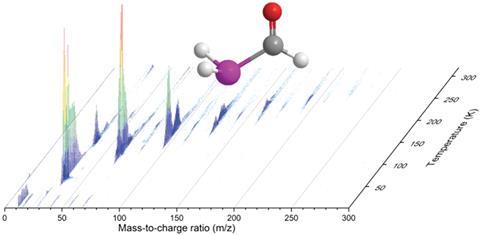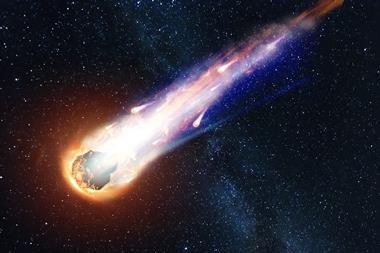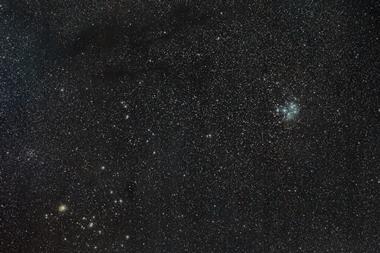Research suggests that formylphosphine should be detectable in outer space
Scientists have synthesised the hitherto elusive molecule formylphosphine (HCOPH2), which contains the simplest phosphorus peptide bond, in an experiment mimicking the interstellar medium.1
It is thought that primitive meteorites delivered phosphorus, one of the building blocks of life, to Earth. However, despite spectroscopy detecting many phosphorus-containing compounds in the interstellar medium, detecting simple phosphorus molecules remains a challenge.

Formylphosphine is a counterpart of the nitrogen-containing formamide, which is ubiquitous in interstellar space. A team of researchers from the US and Taiwan, led by Ralf Kaiser of the University of Hawaii at Manoa, has now synthesised formylphosphine under laboratory conditions mimicking the interstellar medium. By exposing a mixture of phosphine (PH3) and carbon monoxide (CO) in an ultrahigh vacuum to ionising radiation, they were able to form phosphino (PH2) and formyl (HCO) radicals, which recombined to form formylphosphine. The researchers hope this discovery will lead to formylphosphine finally being spectroscopically detected in star-forming regions in space.
Recently, other researchers have detected phosphorus and a multitude of organic molecules in the coma of the comet 67P/Churyumov-Gerasimenko.2 Finding formylphosphine in the interstellar medium would provide a long-sought link between phosphine and the more complex phosphorus-containing molecules that have been detected in space.
References
1 R Frigge et al, Chem. Commun., 2018, DOI: 10.1039/c8cc04125c
2 K Altwegg et al, Science Advances, 2016, 2, e1600285 (DOI: 10.1126/sciadv.1600285)












No comments yet